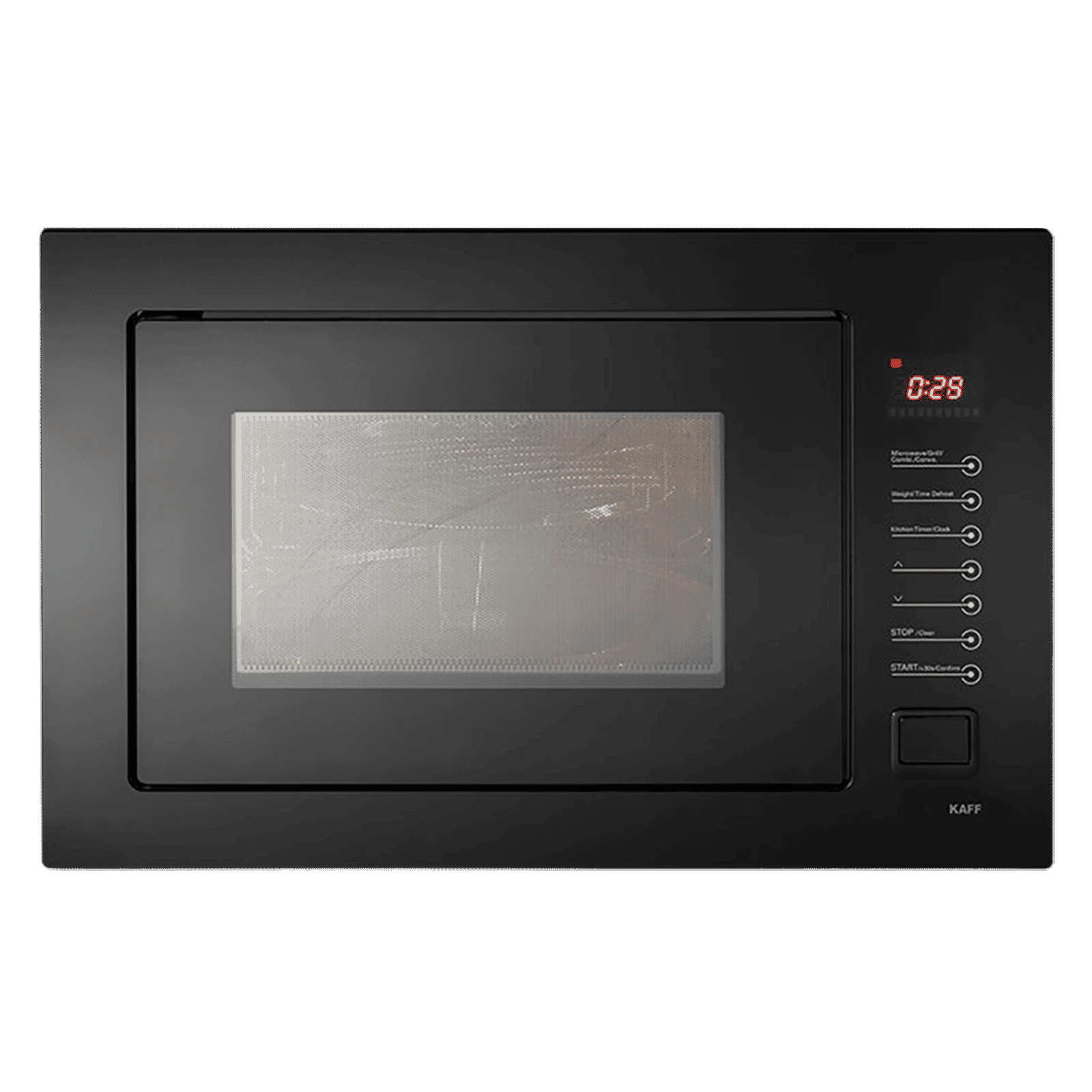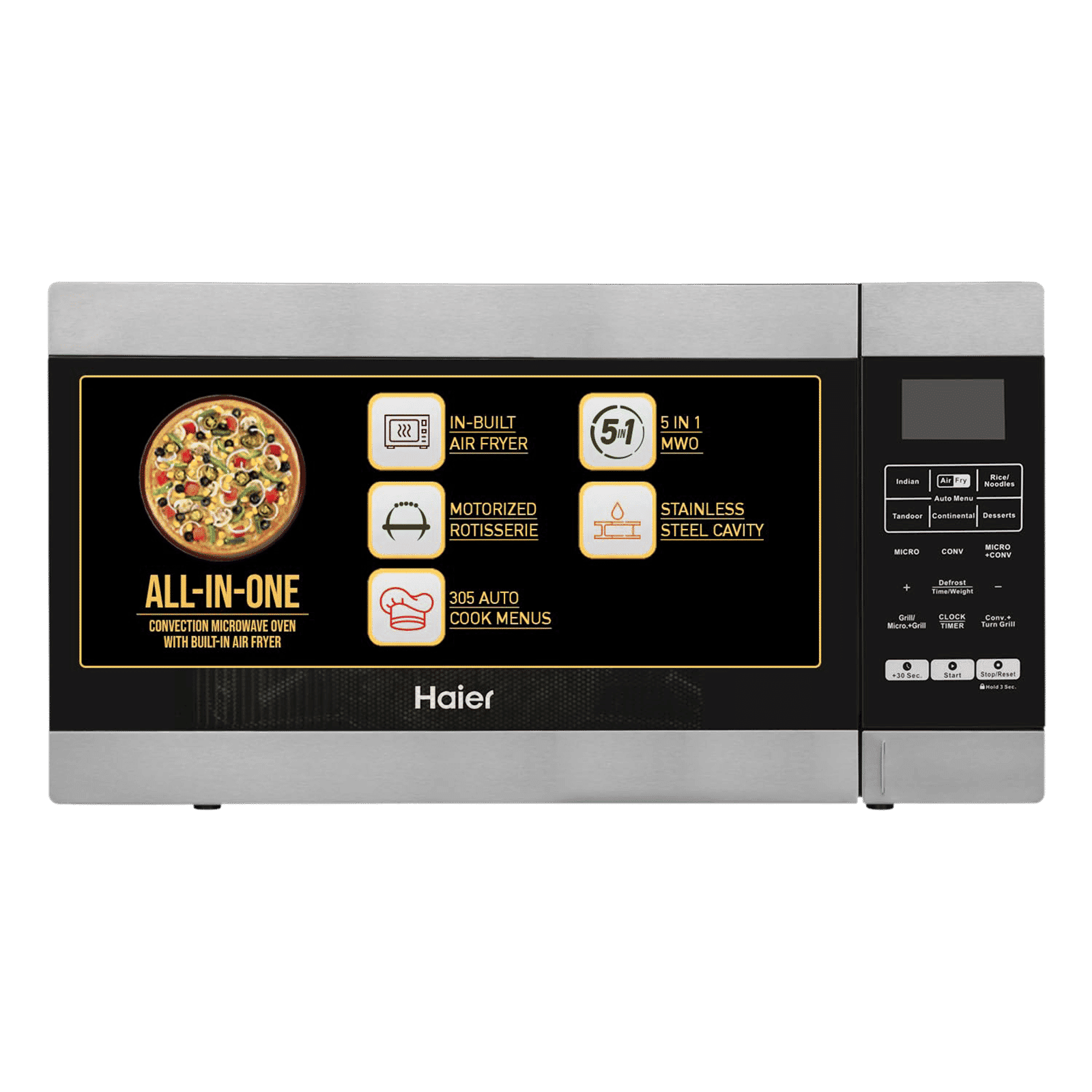
Home Appliances
•04 min read

Buy IFB 28L Convection Microwave Oven with 300 Auto Cook Menus (28BC5, Black) online at best prices from Croma. Check product details, reviews & more. Shop now!
Ever found yourself debating whether your microwave can handle a family dinner or just reheat a cup of coffee? Choosing the perfect microwave is more than simply finding one that fits your kitchen space. In this guide, we dive deep into the world of microwave capacity, helping you understand sizes, measurements, and how to decide the best fit for your lifestyle. Read on to discover a comprehensive checklist to navigate between small kitchen microwave options and family-sized microwaves, ensuring every reheating, cooking, or baking task is taken care of.
Microwave capacity refers to the volume available inside your microwave, typically measured in cubic feet or litres. This measurement is crucial as it directly influences what you can place inside the microwave, from simple reheating tasks to cooking larger meals. A microwave with greater capacity offers more versatility and efficiency in meal preparation. Moreover, while the exterior dimensions give you a hint, it’s the microwave interior space that really counts when ensuring your favourite dishes fit comfortably.
When considering the microwave oven capacity, think about your regular usage. Are you simply defrosting frozen items or preparing elaborate family meals? A larger capacity might be essential for busy households, whereas a compact microwave suffices for minimal, quick tasks. This clarity will help you decide between compact microwave options and large microwave models that cater to larger cooking requirements.
A key part of selecting the right appliance is knowing the standard sizes available. In most kitchens, you'll find standard microwave dimensions typically broken into small, medium, and large categories. Generally, small microwaves have up to 25 litres of capacity, ideal for single or minimal use. Medium models usually range between 25 to 40 litres, a popular choice for most households.
For those with limited counter space, compact microwave options provide an ingenious solution. They offer efficiency without overcrowding your kitchen. On the other hand, large microwave models are perfect for families or enthusiasts who often use bigger cookware for hearty meals. Understanding these categories helps align your kitchen needs with the best microwave size for home use.
Before making any purchase decision, it’s important to be precise about the space available in your kitchen. Start by measuring the external dimensions of your microwave placement area—be it on a countertop, in a built-in spot, or over a range. Use a tape measure to record height, width, and depth, ensuring that the appliance fits comfortably without hindering easy access or cooking efficiency.
Another aspect that shouldn’t be overlooked is the microwave’s interior dimensions. These measurements reveal if your dishes, plates, or containers will fit inside the cavity. Sometimes, the internal design varies significantly even in models with similar cubic measurements. This is why checking the specifications of the microwave interior space is essential, especially if you have larger cookware or special containers to accommodate.
Pro Tip: Think Beyond Exterior Dimensions
Did you know that while microwave capacity is measured in cubic feet or litres, the internal design may differ greatly between models? Always confirm the interior measurements to ensure that your cooking needs are met and that your favourite dishes can be accommodated with ease.

Buy KAFF KMW8A 25L 60cm Built-in Microwave with Multi Programming Mode (KMW8A-BLK, Black) online at best prices from Croma. Check product details, reviews & more. Shop now!
Selecting the best microwave size for your home requires a thoughtful review of your kitchen’s layout, your cooking habits, and household needs. Consider the area available in your kitchen and whether your microwave is destined for a countertop spot, built-in space, or perhaps an over-the-range installation. Your everyday cooking tasks vary as well—whether you're only reheating leftovers or preparing complete meals.
In households where regular cooking is prevalent, opting for family-sized microwaves makes sense. Conversely, if your routine involves occasional or light usage, a smaller unit suffices. An easy-to-use microwave capacity calculator can guide you in this aspect: consider the number of people in your household along with the types of dishes you frequently prepare. This helps ensure a perfect match between your requirements and the appliance's capability.
This step-by-step checklist is designed to simplify your decision-making process:
Step 1: Measure your kitchen space and determine the ideal placement—whether it’s on a countertop, built-in, or over-the-range. Accurate measurements are key to avoiding unnecessary adjustments later on.
Step 2: Decide on your cooking needs—do you need a microwave merely for reheating and defrosting, or do you require one that can handle baking and cooking family meals?
Step 3: Factor in your household size and how frequently you use the microwave. A larger household with frequent cooking needs might benefit from a bigger capacity.
Step 4: Match your requirements to appropriate capacity ranges: small (up to 25 litres), medium (25 to 40 litres), or large (40 litres and above). This will guide you in selecting a unit that offers the right balance between size and functionality.
Step 5: Finally, check the product’s interior dimensions. Ensuring that your plates and containers fit comfortably is as important as the external measurements.

Buy Haier 30L Convection Microwave Oven with 305 Auto Cook Menu (HIL3001ARSB, Black) online at best prices from Croma. Check product details, reviews & more. Shop now!
A good microwave capacity depends on your usage; 0.7–1.0 cubic feet works for light use, while 1.5–2.0 cubic feet is better suited for families and frequent cooking.
Internal capacity measures the usable cooking space and is generally expressed in cubic feet or litres, indicating how much food can be cooked or heated at once.
For smaller households or for basic tasks such as reheating and defrosting, a 1.1 cubic foot microwave is generally sufficient, though it may limit the size of cookware.
Most high-capacity models offer between 2.0 to 2.2 cubic feet, which is ideal for larger dishes and more versatile cooking needs.
In today’s fast-paced lifestyle, making well-informed decisions on kitchen appliances can significantly enhance your cooking experience and everyday convenience. With reliable offerings available that even include benefits like rewards through digital coins, every purchase adds value both now and in the future. Trust that with every determination, you are making a choice not only for efficiency but also for ensuring seamless shopping experiences accompanied by express delivery and expert guidance.
Ultimately, understanding microwave capacity and its impact on your kitchen workflow is essential. By following the checklist provided, you can confidently select a microwave that fits perfectly into your designated space and lifestyle, ensuring great outcomes every time you use it.